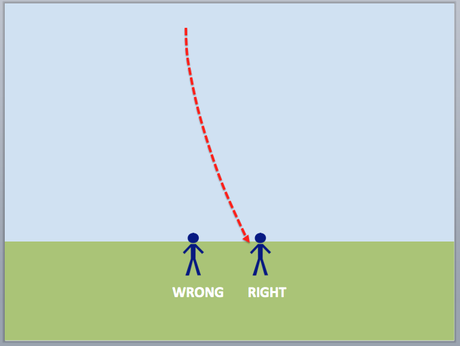A batter hits a ball straight up over home plate a mile high. A “home run in an elevator shaft” as they say. The catcher rips his mask off, turns his back to the infield (like he should), and confidently screams “I got it!” When the ball starts to come down the catcher starts to move backwards. He moves faster now and it’s clear he’s in trouble. He falls backwards towards the mound in a desperate attempt to catch the ball. He doesn’t. It bounces in fair territory and he’s on the ground. Usually the other team laughs.
It’s probably the most embarrassing thing that can happen to a catcher. Unfortunately, it will happen to every catcher at least once. But don’t think your worries are over if you are not a catcher. It can happen to first and third basemen too as well as any other infielder or pitcher who comes in towards home plate to catch a mile high pop-up. It’s called “infield drift.”
Infield drift will occur on any ball hit straight up either in fair or foul territory. When the ball starts to descend it will curve and drift back towards the infield. Thus the term infield drift. Every infielder needs to account for this when charging in towards home plate to catch a high pop-up.
Most fielder are taught to get directly under the pop-up so they can catch it. This is the embarrassing mistake the catcher made when he fell backwards. On balls hit straight up, all fielders (especially catchers) have to give the ball some room to drift back towards the infield. Here is a RIGHT and WRONG photo to show it.

For real young kids, balls are not often hit high enough and with enough spin for infield drift to occur. Getting directly under the ball works for them. That’s why when they get older, it will embarrass virtually every player at least once until they learn how to manage it correctly.
Tomorrow’s post: Practicing for Infield drift

